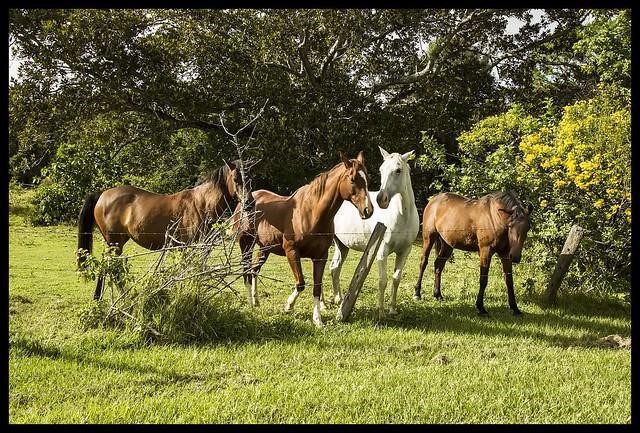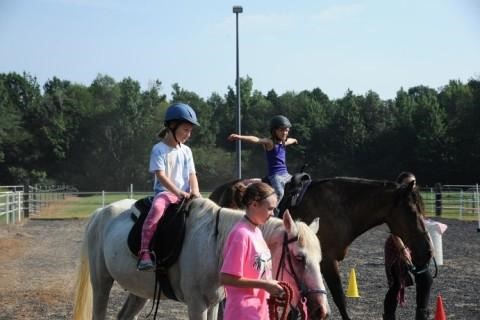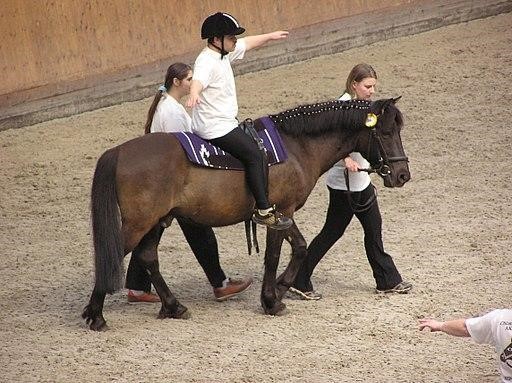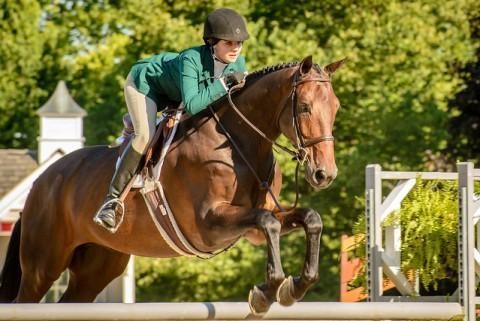
Did you know horses are used to help heal trauma and bring therapeutic benefits to children and adolescents?
Picture riding a gentle mare; there’s a breeze in the air and a connection between yourself and the animal, in both your minds and movements.
The rhythmic sound of hooves, the rocking motion, and the horse intuitively turning in sync with your gaze…this is not only a seemingly therapeutic experience – evidence of horses being incorporated in therapy can be traced back thousands of years, even as far back as Hippocrates and the Ancient Greeks!
If you’re looking for an alternative healing methodology, here’s what you need to know.
What is Therapeutic Horse Riding?

Equine-Assisted Therapy or EAT is the practise of promoting both physical and mental wellbeing through interactions and activities with horses and other equines, which can include upkeep, such as grooming, as well as physically riding the animals.
Specifically, Therapeutic Horse Riding “rhythmically moves the rider’s body in a manner similar to a human gait” say the Professional Association of Therapeutic Horsemanship International (PATH Intl.) Mirroring the nuanced movements of walking can help disabled individuals train and improve balance, strength and flexibility.
Often, Therapeutic Horse Riding utilises a team of instructors and volunteers on the ground, who guide and help the individual to ride in three dimensions.
Apart from the physical aspect of Therapeutic Horse Riding, there are psychotherapeutic and counselling programs that focus on the mental connection between human and horse and utilising this to boost positive emotions and improve self-esteem.
While this may seem like a strange pairing, the benefits of animal therapy is explained by the counselling experts from Living Consciously agree, saying “horses are naturally present. They sense danger and calm on an innate level and can help bring that calm to people struggling. In many cases these horses are rescue horses, bringing even more connectivity between animal and patient.”
Other terms commonly associated with therapeutic horse riding include adaptive riding and hippotherapy.
Brief Modern History of Equine Therapy
Including horses in physical occupation, speech, and mental health professionals has been a part of human healthcare since the 1950s, especially in Europe. The first standardised hippotherapy curriculum was standardised in North America in the 1980s.
Today, it’s been found that Equine Assisted Therapy is offered in over 50 countries around the world!
Therapeutic Horse Riding programs available across the globe now include riding as an alternative treatment for children with cerebral palsy, counselling for those suffering with depression, and symptom management for those with both physical and learning disabilities.
This is positive according to child healthcare expert Janine Brundle, who notes “animals are already a natural part of a child’s world. By bringing together vulnerable young kids and horses, priceless skills of compassion, empathy, patience and understanding develop while trauma is addressed and managed. The benefits are extensive.”
Therapeutic Horse Riding in 2019

In the past year, therapeutic horse riding has boomed, with a variety of programs being implemented across America and Australia.
Multiple associations exist that can accredit centres and instructors as professional equine therapy providers including the Professional Association of Therapeutic Horsemanship, The Equine Assisted Growth and Learning Association and the American Hippotherapy Association.
According to the counselling and mental health experts at Thinking Families, the list of horse-therapy benefits includes “reduction in drug and alcohol dependence, reduced stress, physical exercise, and developing emotions. All of which can transform lives.”
Equine Employment For Youth Offenders
Here in Australia, therapeutic horse riding has been part of the rehabilitation programs offered in a youth detention centre since last October.
ABC Rural correspondents spoke with Marc Gallagher whose company Yarraman Territory has been engaging young people through horse programs for over ten years, most recently at Don Dale, “incorporating the horse program at Don Dale could offer both employment and therapeutic benefits for the detainees,” says Mr Gallagher.
The program has reported that some detainees feel an affinity to the animals due to having a family history connected with horsemanship, whilst others become more aware of their emotions, noticing how their feelings are reflected back through the temperament of the animals they ride.
Mr Gallagher hopes to one day expand the program to help these young people find employment and education after release, especially in horse-related industries.
Geldings Bring The Gold In!

In April, four Australian horse riders Shelby Davis-Hill, Nathan Harvey, Willow Hersnat and Jordan Hill brought back nine gold medals from the World Games Special Olympics.
Further testament to the remarkable horsemanship required to garner top prize in these prestigious competitions is the fact that the games took part in Abu Dhabi, and the riders provided with Arabian horses, cited as different in stature and temperament than the Australian horses they would usually train with.
These successes, despite adaptive requirements, bring the riders one step closer to qualifying for the Tokyo 2020 Paralympic Games.
Liz Hartel from Denmark is often cited as the pioneer of riding as therapy. Though her legs were paralyzed from polio, through Therapeutic Riding she was able to win the silver medal for dressage in the 1952 Olympic Games.
Therapeutic Horse Riding in Australia
It is not hard to understand why Australia is becoming ever more popular as a destination to undertake a Therapeutic Horse Riding program. The sheer amount of space, with the added variety of terrain affords a multitude of environment that will suit most riders. Even just here in Byron Bay, you can explore the wild hinterlands or trot through hoof-deep surf on a sandy beach.
According to Sydney marketer Jacob Farrell, the allure of horse riding is one of the main reasons he’s drawn to Byron Bay. He explains “living in Sydney it can be tough to find ways to disconnect from the daily routine and reconnect with something more natural and primal. Riding horses helps me to unwind and professional equestrian centres are a great way for others to experience the same joy I do. I highly recommend them.”
Would you like to try Therapeutic Horse Riding in Australia this year? Or looking to ride a horse as a hobby?
Let us know in the comments below, or send us a message by clicking Contact Us!
Author Bio:
Tim Frank Anderson is an Australian freelance writer and Sydney-based university student. As a business student, he has a passion for learning about global changes in business culture and specialises in entrepreneurship and innovation-related topics. When Tim isn’t at his desk, you’ll find him exploring National Parks.

Leave A Comment